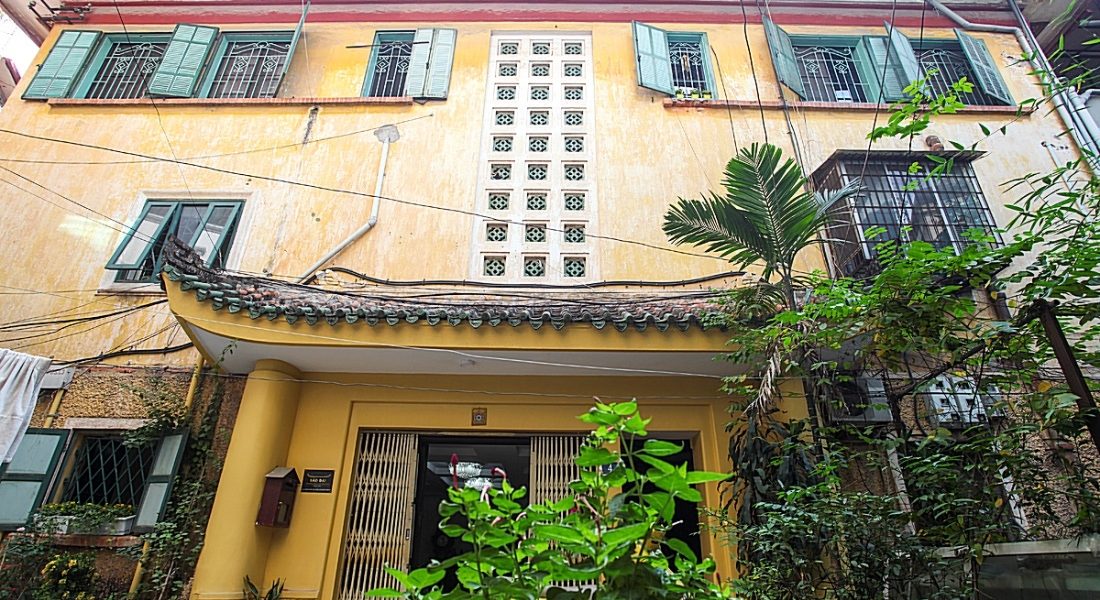
Hidden on Ngoc Ha Street, Hanoi is an 82-year-old building once owned by Bao Dai, the country’s last emperor.

|
|
According to National Archives Center No.1, this was initially the Didelot residence, home of French baron Pierre Didelot and his wife Marie-Agnes Nguyen Huu Hao, biological sister of Queen Nam Phuong, wife of Bao Dai. |
 |
|
Passing through the hands of many owners, the building has been divided into apartments. However, the first, third and fourth floors are still well preserved and they now belong to businessman Ho Hoang Hai. |
 |
|
Surrounding the mansion is the winding walls of the former royal garden. Fence walls remain intact but are covered by ornamental plants and vegetables grown by resident families. |
 |
|
The building has been gradually surrounded by many new homes, so a few people know about it. Each archway of the old fence walls serves as doorways to several households. |
 |
|
The antique mansion features Eastern royal dragon and phoenix roof, along with Western-style furniture and decorations. |
 |
|
Each floor of the building is divided into three to five rooms. These rooms have fireplaces, built-in wooden cabinets, and thick walls to ensure a cool summer and warm winter. |
 |
|
The twisted wooden staircase is regularly maintained so it is still in good shape. |
 |
|
Stairs, wooden floors, fireplaces, wooden doors … are all well preserved. In the picture is the stair system from the third to fourth floor (attic) in the house. |
 |
|
Hai said the French water pump from the French colonial period still works (left), and the electric wire system is hidden in steel tubes inside the wall (right) and under the floor. |
 |
|
At the end of Feb. 2021, the mansion was opened for free to visitors for a month, attracting many architecture, history and art buffs. The building is currently being rented by a unit of Mant furniture company in Hanoi as a showroom. |
